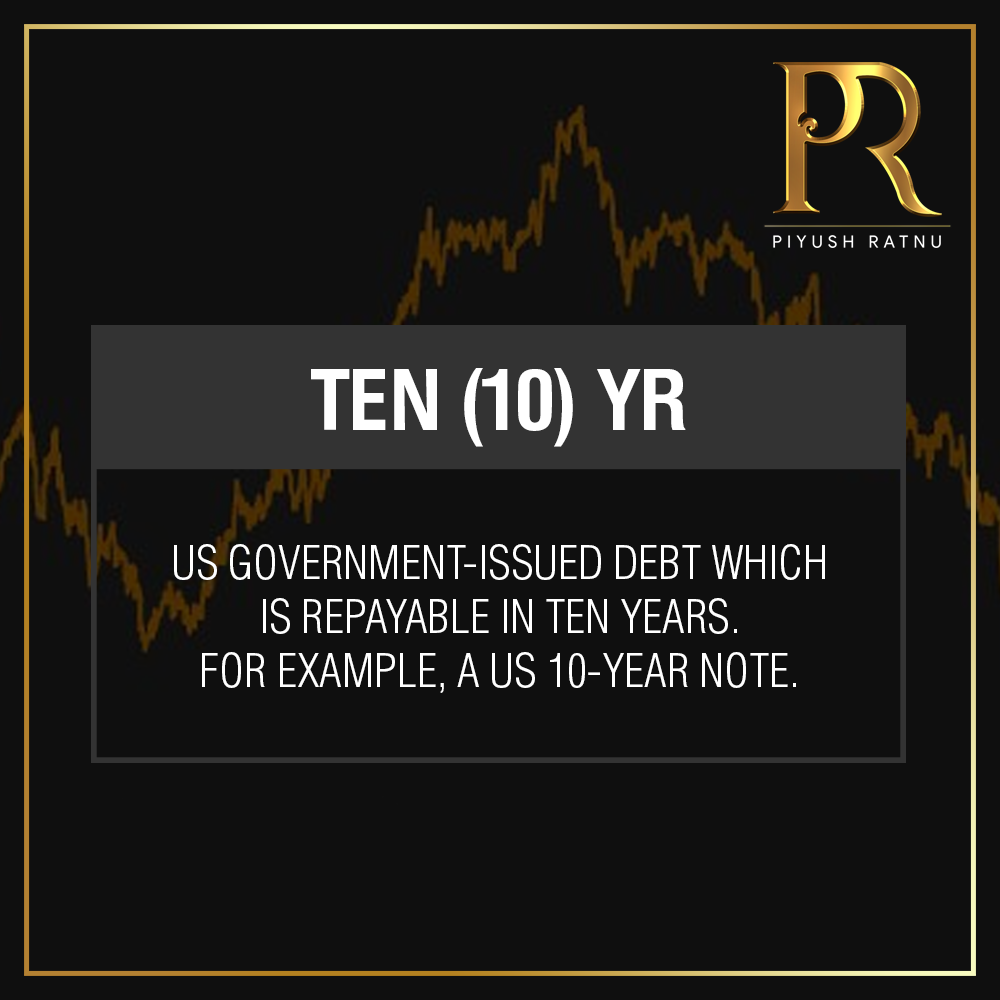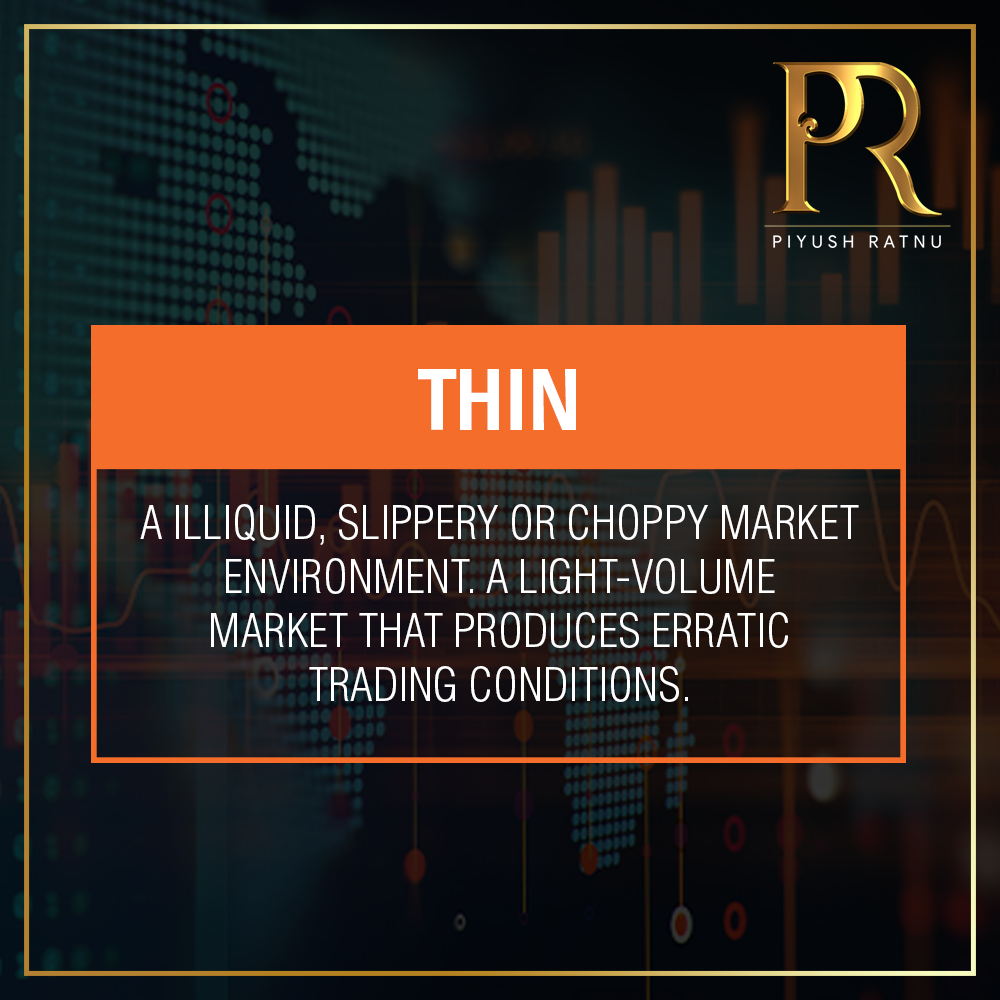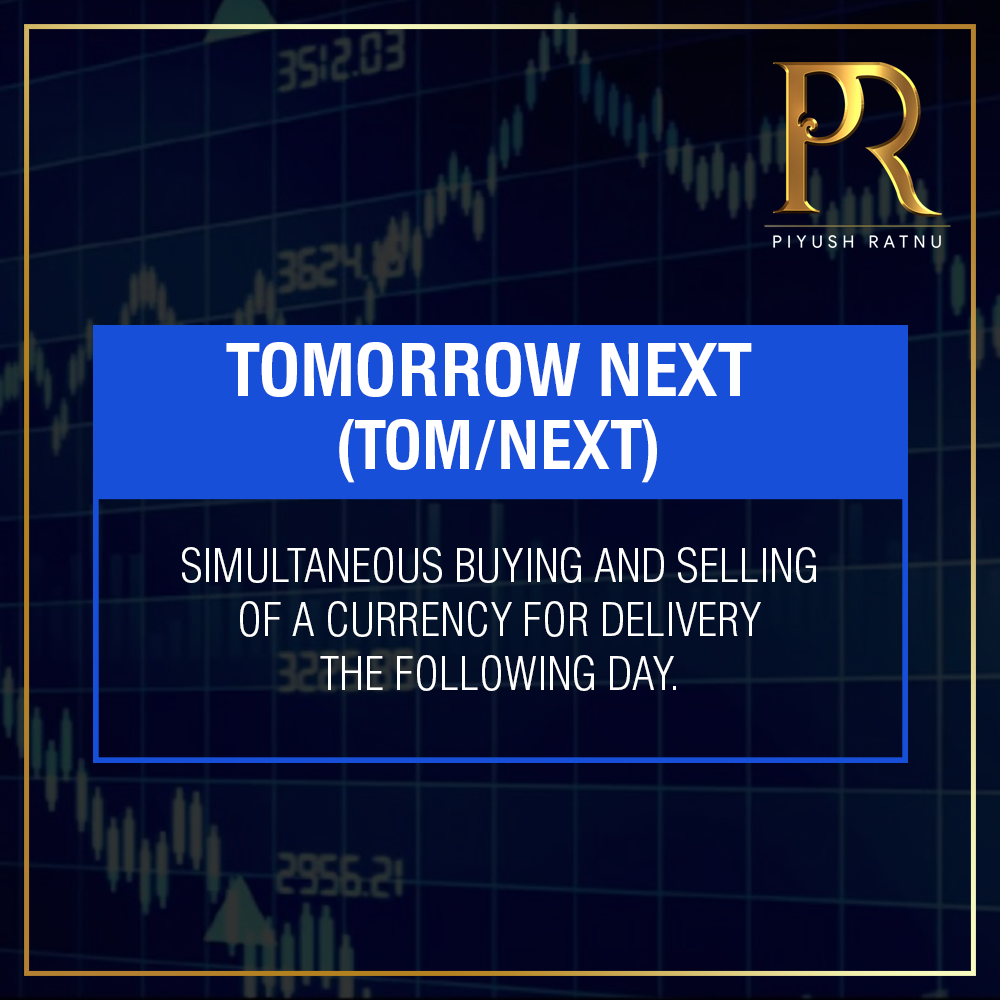TAKE PROFIT: See definition of Limit Order.

TAKE OVER: Assuming control of a company by buying its stock.

TECHNICAL ANALYSIS: The process by which charts of past price patterns are studied for clues as to the direction of future price movements.

TECHNICIANS/TECHS: Traders who base their trading decisions on technical or charts analysis.

TEN (10) YR: US government-issued debt which is repayable in ten years. For example, a US 10-year note.

THIN: A illiquid, slippery or choppy market environment. A light-volume market that produces erratic trading conditions.

THIRTY (30) YR: UK government-issued debt which is repayable in 30 years. For example, a UK 30-year gilt.

TICK (SIZE): A minimum change in price, up or down.

TIME TO MATURITY: The time remaining until a contract expires.

TOKYO SESSION: 09:00 – 18:00 (Tokyo).

TOMORROW NEXT (TOM/NEXT): Simultaneous buying and selling of a currency for delivery the following day.

T/P: Stands for “take profit.” Refers to limit orders that look to sell above the level that was bought, or buy back below the level that was sold.

TRADE BALANCE: Measures the difference in value between imported and exported goods and services. Nations with trade surpluses (exports greater than imports), such as Japan, tend to see their currencies appreciate, while countries with trade deficits (imports greater than exports), such as the US, tend to see their currencies weaken.

TRADE SIZE: The number of units of product in a contract or lot.

TRADING BID: A pair is acting strong and/or moving higher; bids keep entering the market and pushing prices up.

TRADING HALT: A postponement to trading that is not a suspension from trading.

TRADING HEAVY: A market that feels like it wants to move lower, usually associated with an offered market that will not rally despite buying attempts.

TRADING OFFERED: A pair is acting weak and/or moving lower, and offers to sell keep coming into the market.

TRADING RANGE: The range between the highest and lowest price of a stock usually expressed with reference to a period of time. For example: 52-week trading range.

TRAILING STOP: A trailing stop allows a trade to continue to gain in value when the market price moves in a favorable direction, but automatically closes the trade if the market price suddenly moves in an unfavorable direction by a specified distance. Placing contingent orders may not necessarily limit your losses.

TRANSACTION COST: The cost of buying or selling a financial product.


